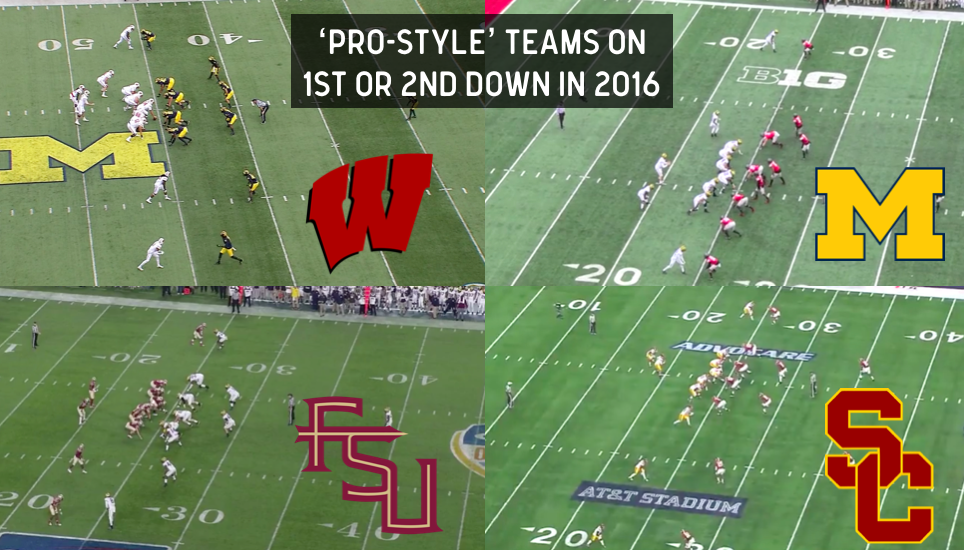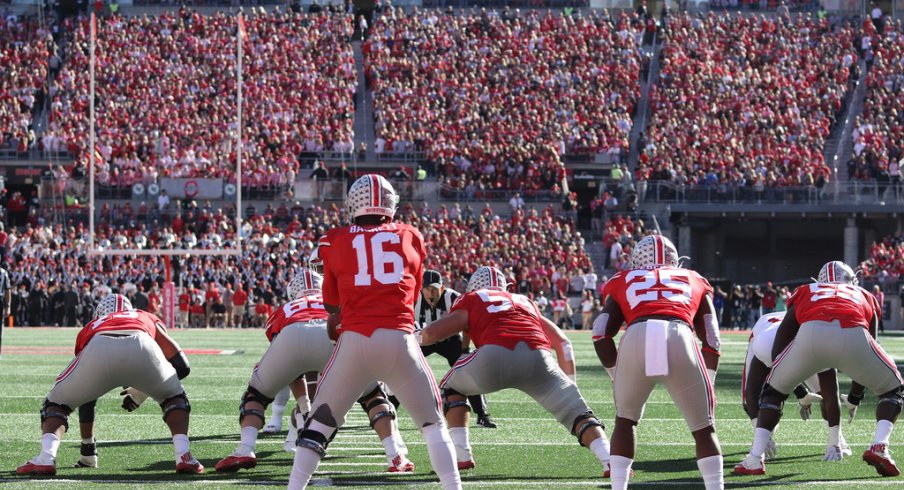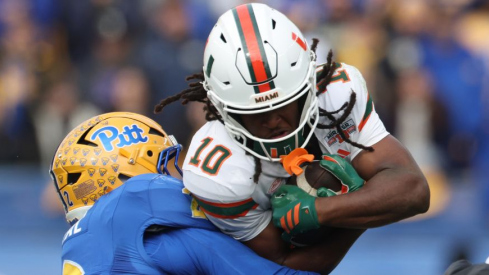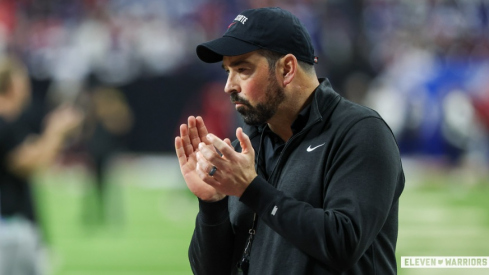Over the past decade and a half, what we’ve seen on the football field has looked quite different to the untrained eye.
Even as millions of Americans create fantasy football lineups with a quarterback, two running backs, two receivers, and a tight end, everyone involved knows that’s not what they see when turning on the TV each fall.
Watch last year’s super bowl and you see Tom Brady go multiple possessions without ever lining up under center. You see the Falcons - one of the most traditional NFL offenses with roots going directly back to the Bill Walsh 49ers thanks to coordinator Kyle Shanahan, whose father had called plays for Walsh in the 1980s - relying heavily on three receiver sets and rarely using a fullback.
Of course, this is the ‘spread’ offense evolution coming to its maturity. No longer is there simple novelty in seeing three or four wide receivers on the field at once, or even in seeing an NFL QB properly execute the zone-read.
If anyone questioned if there was a battle for football’s soul, it’s pretty clear which side won.
The two biggest changes we’ve seen at every level of the game aren’t plays or philosophies - but personnel and alignment. The game is now suited to smaller, faster players, specifically at the receiver spots.
Even Ohio State, a team hardly known for its ability to throw the ball the past few years, will rotate six wideouts in every game, a practice that's been in place in Columbus for years. Defenses have followed suit, finding more defensive backs and smaller, quicker linebackers that can play in space, leaving the traditional thumping linebackers and fullbacks to find new roles.
Even the most traditional, ‘Pro-Style’ offense found at the college level haven’t been immune to this change, no longer waiting for third-and-long to bring in extra receivers and operate from the shotgun.

If anyone questioned if there was a battle for football’s soul, it’s pretty clear which side won.
Though these changes have become the norm at the high school level with many college programs having joined the movement long ago, a feeling persisted among the media that somehow the NFL was immune to the change - a feeling that couldn’t have been more wrong.
Every spring we hear Jon Gruden preach to aspiring pro QBs about the importance of operating from under center and mastering the footwork in a proper five-step drop. If it were still 2006, that kind of thinking would never be questioned, given the way NFL offenses looked at the time.
| NFL Shotgun Frequency, 2006 | |||||
| Highest Rate of Shotgun | Lowest Rate of Shotgun | ||||
| 1 | MIA | 44% | 28 | OAK | 6% |
| 2 | NE | 34% | 29 | SEA | 3% |
| 3 | GB | 34% | 30 | CHI | 1% |
| 4 | IND | 34% | 31 | HOU | 1% |
| 5 | PIT | 33% | 32 | TB | 0% |
| NFL AVERAGE: 19% | |||||
Fast forward a decade and the story is wildly different. While only Chip Kelly’s San Francisco team operated entirely from the shotgun last fall, even the aforementioned ‘old-school’ Falcons still spent nearly half their snaps in the gun.
| NFL Shotgun Frequency, 2016 | |||||
| Highest Rate of Shotgun | Lowest Rate of Shotgun | ||||
| 1 | SF | 99% | 28 | DAL | 51% |
| 2 | DET | 84% | 29 | TB | 50% |
| 3 | BUF | 80% | 30 | ARI | 49% |
| 4 | CAR | 78% | 31 | DEN | 43% |
| 5 | GB | 76% | 32 | ATL | 40% |
| NFL AVERAGE: 68% | |||||
But perhaps the biggest misunderstanding of football coverage in the past decade has not been the differences between ‘spread’ and ‘pro-style’ systems, but the growing lack thereof.
Shanahan’s Falcon offense was built on the same zone-running principles his father relied heavily on and made famous with the Denver Broncos of the mid 1990s. Yet these same run game principles were the foundation of some of the first, true ‘spread-to-run’ systems that emerged at Bowling Green under Urban Meyer, West Virginia with Rich Rodriguez, and at Northwestern under Randy Walker and coordinator Kevin Wilson, who would later refine and adapt the system at Oklahoma, Indiana, and now, Ohio State.
While Wilson’s Hoosiers may appear to be running a new concept, pitching it outside from the shotgun with no true fullback, the only difference between it and the Broncos 20 years ago is the footwork in the backfield. Both teams are in 11 personnel (1 back, 1 tight end) and the outside zone play is being run behind the tight end to the strength of the formation.
In fact, the entire ‘spread’ movement was based on the simple desire to be more efficient and balanced in an offense’s alignment, and allow execution to outweigh pure physical strength. By spreading out a defense to cover all 53.5 yards instead of packing nine or ten players between the hash marks, an offense with smaller, more skilled players could gain an edge over the monstrous linebackers patrolling the middle.
While it’s true that quarterbacks spend less time dropping back from under center and surveying a passing game than they did in the 80s or 90s, something few college and even fewer high school QBs were able to do well, the position evolved into a series of binary decisions.
Instead of turning around to hand off, signaling a run play to everyone in the stadium, the signal-caller could now keep his eyes on the defense at all times, making a quick read to determine where the ball should go based solely on the movements of a specific defender. The most famous of these decisions is the zone-read, which punished defenses for keying solely on the running back and re-equating numbers back in the offense’s favor with more blockers and ball-carriers than defenders to tackle them.
With easier decisions and plays that appeared different when run in succession, but were actually the same, offenses were able to operate at a much higher tempo. However, professional defenses were often too savvy to be beaten regularly by this tactic, leading to more detractors of the uptempo, no-huddle philosophies taking over the high school and college levels in the late 2000s.
That period also saw a reliance on athleticism at the QB spot, which left many at the top (and most vocal) level bemoaning the lack of prospects with the necessary skills to beat an NFL secondary through the air. But not everyone at the college level could find an athlete with the skills to run and throw at a high level, leading to a different kind of option play - run/pass options.
Buckeye fans are familiar with the idea, having seen them in great frequency during the Meyer regime, but now, even some of the longest holdouts against embracing ‘spread’ principles have incorporated their use.
Of course, once college and high school QBs mastered the basic decision-making of these run-pass options, their coaches began incorporating more advanced reads that required multiple decisions.
After a few years of college coaches decimating defenses with these kinds of decision trees, the NFL finally began to take notice. This season, professional offenses are expected to feature more RPOs than ever before, and not just because of former college stars like Marcus Mariota or Dak Prescott who previously starred in 'spread' systems. Aaron Rodgers and Ben Roethlisberger, two of the NFL's most seasoned, and successful, veteran quarterbacks will be executing RPOs at a high rate this fall, meaning even the most old school critics may finally be forced to the drop their 'gimmick' label.
But longtime 'spread' coaches haven't just adapted their running games from what they saw work on Sundays. In fact, despite the constant focus on wide receiver screens in spread offenses, many of the basic 'west-coast' passing concepts (long the Gold Standard for professional offenses) have been prominently featured in these seemingly wide open playbooks for decades.
Concepts like 'stick,' 'snag,' and 'follow' have been adapted to three and four-receiver formations, with all three wideouts playing the parts of a traditional split end or flanker, an in-line tight end, and a back releasing from the backfield.
These simple passing concepts were designed to attack defenses at their weakest points, getting a team's best athletes the ball in open space and able to pick up yards after the catch. However, those teams in the 80s and 90s couldn't effectively run the ball without compact formations featuring a fullback and a tight end. But once spread teams figured out how to consistently pick up yards on the ground without those big, extra blockers (and by using the quarterback to help out in this regard), the number of opportunities to exploit defenses with these classic passing concepts on the edges grew with extra receivers.
Of course, spread teams also incorporated concepts from other 'gimmicky' systems like the Air Raid or Run-and-Shoot that put up big numbers through the air, but failed to do so in the win column. But even the Buckeyes, with their underwhelming passing game the past two years, looked to Air Raid pioneers Hal Mumme and Mike Leach to find one of the their best big play concepts - a derivative of their 'Y-Cross' concept.
But ironically, though Mumme and Leach are credited with zigging while the rest of the football world zagged in the 90s and 2000s, nearly all the pass plays on either end of the spectrum were heavily influenced by the work of Lavell Edwards at BYU. Edwards, who passed away last December at the age of 86, made the passing game an art form, influencing a host of contemporaries like Walsh, and an entire generation that followed.
As noted in his obituary,
The concept of using the short pass as a sort of substitute for a power rushing game is now quite common. But when Edwards took over the BYU program in the early 1970’s, it was a fairly new idea to base an offense around quick outs and slip screens. Such play designs are now seen at all levels, of course, but Edwards deserves much of the credit for developing them.
...
Ty Detmer brought home the program’s first Heisman Trophy in 1990, and a couple of Edwards’ other students, Jim McMahon and Steve Young, went on to quarterback Super Bowl champion teams. Gifford Nielsen and Marc Wilson also were high draft picks.
Edwards’ NFL influence hardly stops there, however; his former assistants who’ve enjoyed considerable professional coaching success include Mike Holmgren and Brian Billick, who would lead their team to Super Bowls. Andy Reid has won 172 games in his 18 seasons.
The introduction of the spread hasn't been perfect - as offensive line play has largely suffered as a result of less focus on the middle of the field - yet most of the game's recent innovations have been due to its emergence. But today, coaches and analysts at the highest level have come to accept the 'Spread' revolution for what it is - a different, and often more efficient, way of doing the same things they always have.



